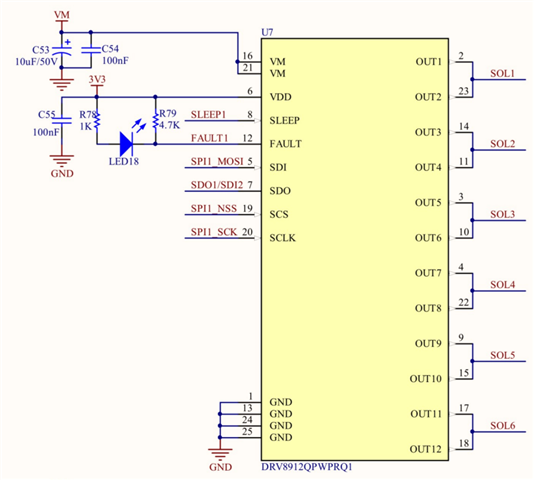Hi Team,
Customer used stm32f103vct6 to control 3 DRV8912 chips through daisy chain. When the sleep pin was set to 1, the fault light will light up. He tried turning off the open circuit detection but still no response. The customer considered this to be a SPI reading and writing problem.
When operating the DRV8912 register, did he only need to pull the nSCS pin low, wait for 8 bytes of transmission to complete, and then pull it high?The customer's understanding is that nSCS needs to be given a pulse signal to start reading and writing.
When reading and writing DRV8912 through SPI, can full-duplex mode be used or can only half-duplex mode be used? Especially when daisy chained.
According to the SPI communication protocol, in full-duplex mode, reading and writing are performed simultaneously. When he sends the first header byte (HDR1), can he receive the status bit (S3), or does he have to wait for 8 bytes to be sent and then send a null byte to receive the data?


Regards,
Annie




